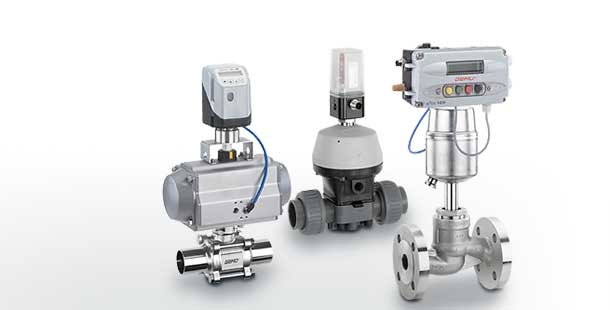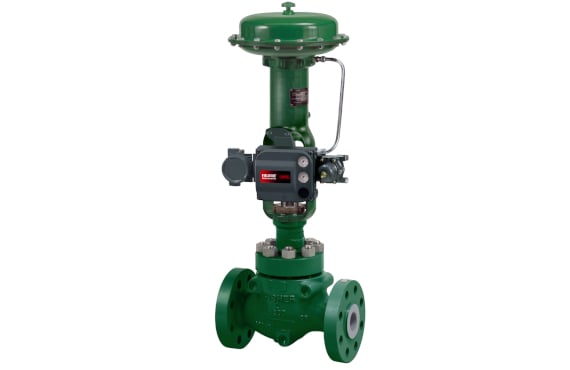Maximizing System Control with High-Performance Control Valves
Maximizing System Control with High-Performance Control Valves
Blog Article
Achieve Seamless Integration and Control With High Quality Building Automation Controls
In the world of modern structure management, the value of quality structure automation controls can not be overstated. As modern technology continues to breakthrough, the integration and control of various systems within a structure have actually evolved to be extra advanced and reliable. The seamless operation and surveillance of lighting, COOLING AND HEATING, safety and security, and other structure functions have come to be critical for enhancing passenger convenience, energy efficiency, and general functional efficiency. Nevertheless, the journey towards accomplishing true combination and control is a complex one, with considerations ranging from system compatibility to cybersecurity. Embracing high quality structure automation controls is not just an issue of comfort but a tactical imperative for organizations intending to enhance their facilities' performance and sustainability.

Evolution of Building Automation Controls
Throughout the past couple of decades, the advancement of constructing automation controls has actually substantially changed the means buildings are managed and run. Initially, constructing automation systems primarily concentrated on fundamental functions such as controlling heating, ventilation, and air conditioning (HVAC) systems. Nevertheless, as technology progressed, these controls have become much more sophisticated, enabling for a broader range of building systems to be incorporated and managed centrally.
The development of developing automation controls has actually seen a shift towards more intelligent systems that can adapt to transforming conditions in real-time. This adaptability is essential for maximizing power efficiency and making sure occupant convenience. Additionally, contemporary building automation controls currently provide attributes such as predictive upkeep, remote surveillance, and information analytics, allowing center supervisors to make data-driven decisions to improve structure performance.

Benefits of Quality Integration
The innovation in building automation manages in the direction of more intelligent systems has emphasized the substantial benefits of high quality integration in maximizing structure operations and enhancing total efficiency. Quality assimilation of developing automation controls uses numerous crucial advantages. It leads to boosted energy effectiveness by allowing different systems to function with each other flawlessly, ensuring optimal performance and lowering energy waste. Quality assimilation improves resident comfort and performance by making it possible for customized control over ecological setups like temperature, air, and illumination quality. This customization can cause a more conducive and comfortable working or living environment. Additionally, quality combination streamlines maintenance and fixing procedures, as all systems are interconnected and can be monitored and controlled from a centralized interface. This central control likewise supplies far better exposure and insights into building performance, making it possible for proactive maintenance and optimization methods. Overall, the benefits of quality integration in structure automation controls are indisputable, using boosted effectiveness, convenience, and operational efficiency.
Improved User Experience and Ease Of Access
Enhancing customer communication with building automation regulates via instinctive layout and improved accessibility elevates the total experience for residents and center managers alike. By focusing on customer experience, developing automation systems can become a lot more straightforward and effective. Instinctive see this site user interfaces, clear navigating, and personalized setups empower customers to interact with the controls conveniently and successfully.
Ease of access attributes play an important role in making sure that all people, including those with specials needs, can utilize the building automation manages effortlessly. Integrating attributes such as voice commands, responsive buttons, and color-contrasted display screens can improve availability and make the controls more comprehensive.
Furthermore, boosted user experience leads to greater user fulfillment, boosted performance, and far better decision-making. Occupants can change ecological setups according to their choices, while center supervisors can efficiently keep track of and handle structure systems - control valves. On the whole, focusing on user experience and access in structure automation manages adds to a more effective and smooth structure setting for all stakeholders included
Lasting Practices With Automation

In addition, automation can help with the assimilation of sustainable my blog energy resources such as photovoltaic panels or wind generators into building procedures. By automatically changing energy use based on the accessibility of renewable power, structures can further decrease their dependence on non-renewable resources. This smooth integration of sustainable methods not only benefits the setting yet additionally improves the general functional performance and cost-effectiveness of the building. With automation, structures can align with modern-day sustainability objectives and contribute to a greener future.
Future Trends in Structure Control Solution
One prominent trend forming the future of structure control systems is the boosted integration of Artificial Knowledge (AI) and machine discovering. In addition, the Internet of Points (IoT) is transforming structure control systems by attaching devices and sensors to streamline procedures and enhance efficiency.
One more vital fad is the focus on cybersecurity steps to protect against potential risks to building automation systems. As buildings end up being a lot more interconnected, ensuring robust cybersecurity methods will certainly be important to protect delicate information and prevent unapproved accessibility.
Furthermore, the change in the direction of cloud-based systems is getting momentum, permitting centralized control and remote access to building systems. This assists in simpler tracking, upkeep, and updates, enhancing the overall efficiency and versatility of building control systems. As modern technology remains to advancement, these patterns are anticipated to shape the future landscape of structure automation controls, driving technology and sustainability in the developed atmosphere.
Conclusion
Future fads in structure control systems are most likely to concentrate on more boosting automation abilities for boosted energy efficiency and general efficiency. It is crucial for structure proprietors and drivers to focus on the adoption of quality structure automation controls to enhance building operations and achieve long-lasting sustainability objectives.
In the world of modern-day building monitoring, the relevance of top quality building automation controls can not visit be overemphasized. Overall, the evolution of building automation regulates continues to drive advancement in the structure monitoring industry, offering brand-new opportunities for creating smarter and a lot more lasting structures.
The advancement in building automation regulates in the direction of even more smart systems has actually highlighted the substantial advantages of top quality assimilation in optimizing building operations and enhancing overall effectiveness. On the whole, focusing on customer experience and access in building automation manages contributes to a more efficient and seamless building setting for all stakeholders entailed.
It is essential for structure owners and operators to prioritize the adoption of top quality building automation regulates to enhance building operations and attain long-lasting sustainability objectives. - control valves
Report this page